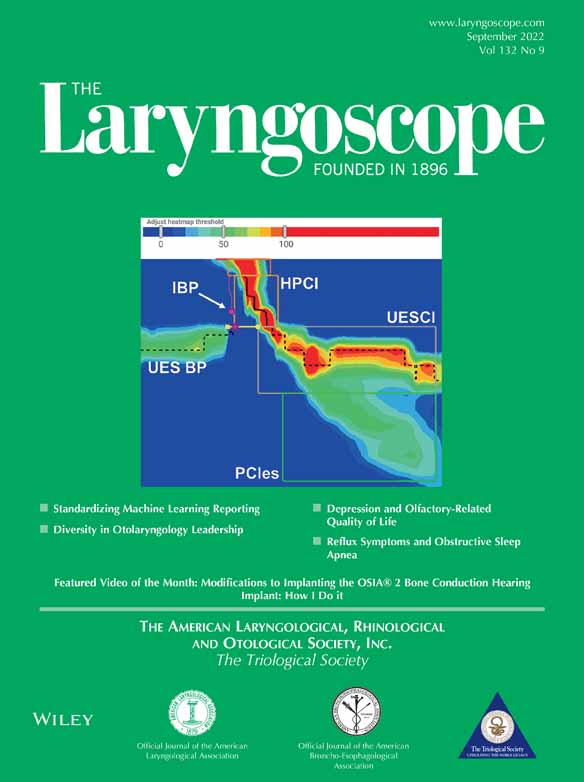Utility of Ultrasonography for Diagnosis of Salivary Gland Sialolithiasis: A Meta-Analysis
Editor's Note: This Manuscript was accepted for publication on January 01, 2022
d.h.k. and j.m.k. contributed equally to this work.
This research was supported by the Basic Science Research Program through the National Research Foundation of Korea (NRF) funded by the Ministry of Education (2020R1I1A1A01051844) and the Bio & Medical Technology Development Program of the National Research Foundation (NRF) funded by the Ministry of Science & ICT (2019M3A9H2032424, 2019M3E5D5064110). The sponsors had no role in the study design, data collection and analysis, decision to publish, or preparation of the manuscript.
The authors have no other funding, financial relationships, or conflicts of interest to disclose.
Abstract
Objectives
We hypothesized that ultrasonography for salivary gland stone detection would have a diagnostic accuracy similar to that confirmed by sialendoscopy, sialography, or surgery. Therefore, we evaluated the diagnostic characteristics of ultrasonography in terms of submandibular and parotid stone detection compared to confirmatory methods.
Methods
We searched PubMed, Embase, the Web of Science, SCOPUS, and the Cochrane database to October 31, 2021. The risk of bias was evaluated using the QADAS-2 tool.
Results
Ten studies involving 1393 patients were included in the analysis. The diagnostic odds ratio of ultrasonography was 162.6013 (95% confidence interval [CI] [53.9883; 489.7208] and I2 value 81.0%). The area under the summary receiver operating characteristic curve was 0.963. The sensitivity, specificity, negative predictive value, and positive predictive value were 0.8992 (95% CI [0.8534; 0.9318]; I2 = 79.9%), 0.9664 (95% CI [0.9290; 0.9844], I2 = 65.6%), 0.8076 (95% CI [0.7256; 0.8694]; I2 = 80.4%), and 0.9853 (95% CI [0.9629; 0.9943]; I2 = 77.4%), respectively. However, high-level among-study heterogeneity (I2 ≥ 50%) was evident, attributable to the inclusion of different glands. On subgroup analysis, significant differences in the negative predictive values (parotid gland only [0.9392], submandibular gland only [0.6718], and parotid and submandibular glands [0.8105]) were apparent. We found no significant among-study difference in the sensitivity, specificity, positive predictive value, or diagnostic odds ratio (P > .05).
Conclusion
Ultrasonography usefully detects submandibular and parotid gland stones. Ultrasonography of the parotid gland was associated with the highest diagnostic accuracy, but further clinical studies are needed.
Level of Evidence
NA Laryngoscope, 132:1785–1791, 2022




